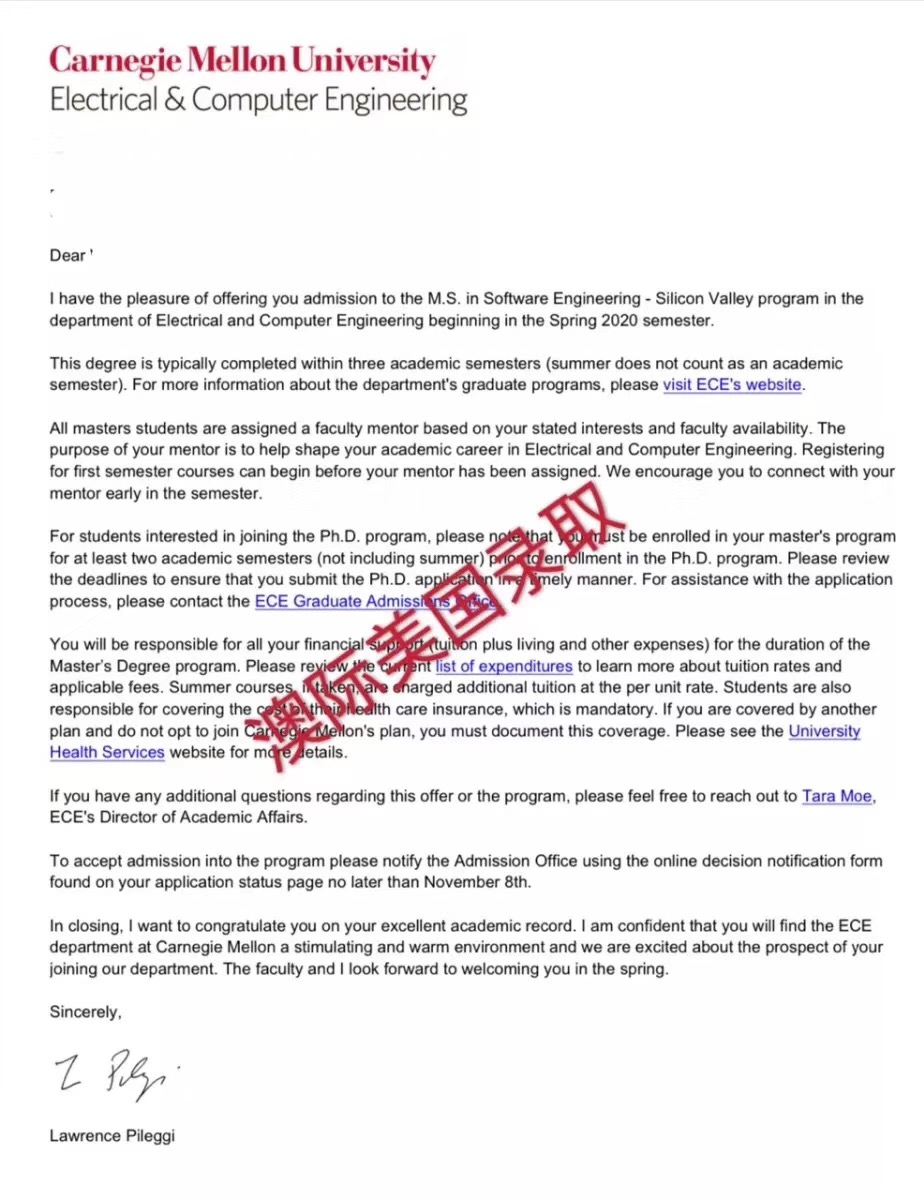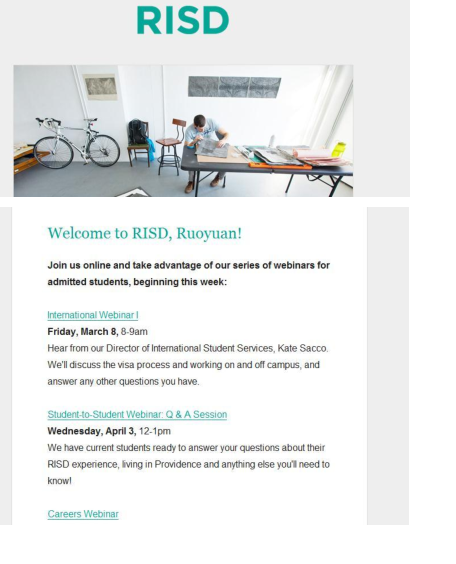美国留学申请文书——ESSAY写作技巧
2017-04-05 262阅读
Calligraphy
[Prompt: What you do in the classroom dines only a part of who you are. How do you spend your time when you are not in class?]
At my childhood home in Macau, frames of Chinese brush calligraphy and paintings were everywhere. As a kid, I did not care much about those “hanging things.” My family only talked about their value, because artists of posthumous fame created them. Since my grandparents, my parents and their friends just regarded them as decorations and even displays of wealth, I did not learn to appreciate them as art until I was fourteen.
In my Chinese primary school, Chinese calligraphy was an academic subject. I had no interest in it, because it was a messy art. I was always watching out for the ink -- if I put too much on a brush, the ink would drip, and the whole piece would be smeared. I always wondered, “Why do people still want to write with those clumsy brushes?” It took me a long time to learn how to handle that “clumsy” brush correctly. The teacher often told us, “You should be able to hold an egg in your hand while you’re holding the brush, ” yet in the first year, I learned only how to make dots, because the brush kept slipping.
Despite my initial indifference toward this fading art, I did learn how to write well, using both pen and brush. Through practicing Chinese calligraphy, I learned how to structure a Chinese word, which piqued my interest. For example, the Chinese character of “horse” actually looks like a horse. When I was in sixth grade, my teacher nominated me for an annual Chinese calligraphy competition. My family was elated, because writing well in Chinese calligraphy was a sign of being a scholar. They so desperately wanted me to win that they hired a calligraphy teacher to teach me to write the hardest form of calligraphy. In three months, I only learned how to imitate my teacher’s writing, but soon I would be taught an unexpected lesson: at the competition, I blanked out after being given a poem that I had never practiced bore. I could not write a word of my own style. I lost. And I cried. I felt I disgraced my school, my family, my calligraphy teacher, and most of all, myself.
After the competition, my calligraphy teacher said to me, “You have no passion, no respect, no will in writing Chinese calligraphy. That’s why you lost. Girl, let us start over. Let me teach you what Chinese calligraphy really means.” And so I began to learn the basics. After first learning how to hold a brush properly, in a few months I was able to write a full page of words in my own style. I developed a new attitude and a passion. I began to understand that it took patience, determination and a will to write well. The harmony between each line, each word and even each stroke is crucial in a piece. The wrong placement or even the inadequate use of force will ruin a piece; this adds to my fascination. The foundation of writing a perfect piece of calligraphy is thinking and planning. Through Chinese calligraphy, I found my philosophy of life: to plan bore I act. The goal I now plan to achieve is to promote and preserve calligraphy as an art, and as an approach to life.
翻译
书法
你在教室里的活动只是体现了你真实个体的一部分,那么你的课余时间又是怎么过的呢?
小时候在家乡澳门,到处都能看到中国书画的表框。当时只是个小孩子,所以我根本不会去关心这些家里挂着的东西。我的家人只会谈论到它们的价值,因为一些作品是艺术家们的绝笔。由于我的祖辈父辈只是将这些书画作为装饰品有时做为一种财富的象征,所以十四岁之前,我不懂得将它们作为一种艺术来欣赏。
在中国上小学时,书法被单独的设置为一门课。可我对它没有一点兴趣,因为书法真是一门麻烦的艺术。我得小心用墨,如果沾多了它会自己滴下来,那么整张纸就被毁了。我一直搞不懂,为什么人们到现在还要使用这种笨重的毛笔来写字。我花了好久来学习怎样正角握住这个“大刷子”。老师经常和我们说:“你们的受要在握笔的同时握住一颗鸡蛋。”所以在第一年里,我尽学着写“点”了,因为笔总是要滑下来。
尽管我开始对这门艺术很冷漠,但是我最终还是学会了怎样把书法字写好,不管用钢笔还是毛笔。在学书法的过程中我学到了汉字的构造,我引起了我及大的兴趣。比如,汉字里的“马”字,就像及了一匹马。在我六年级的时候,我的老师提名我参加年度书法竞赛。我得家人都很高兴,因为写一手好字就意味着今后可能会一名学者。他们特别希望我能赢得比赛,所以帮我请了书法老师,负责教我写一些很难的书法字。三个月里,我只学会了临摹老师写的字,可不久我就上了意想不到的一节课:比赛过程中,我抽到的是一首我从来没有练过的诗,我被淘汰出局了。没有一个字我可以写出自己的风格。我失败了。哭了。我觉得我给学校丢脸了,给我的家人丢脸了,我的书法老师,最重要的是我觉得我让自己蒙羞了。
比赛之后,我的书法老师告诉我:“你没有热情、没有敬意、没有写的欲望,这就是你为什么会输的原因。孩子,让我们重新开始。我来叫你中国书法的真正意义所在。”于是我开始了基础的学习。学习了怎样握笔之,几个月内我就可以写出几页拥有我自己风格的字了。我有了全新的态度和热情,我明白了把字写好,需要耐心、决心以及意志力才行。行与行、字与字,甚至每一笔之间的结构都有一个很好的安排。笔画的位置或者用力方面的一点差错就会毁了整页的字,这些让我对书法更加着迷。写好书法的前提就是思考、计划。通过中国书法,我学到了生活中要先斟酌再行事的哲理。我现在计划达到的目标就是将书法作为一种艺术来推广和保护,同时也将书法作为我生活的一个指南与方式。
点评:
文章通过作者自己从对书法没有什么认识到被动的学习,然后比赛失败之后有了新的认识最后把这门艺术转化为自己的兴趣地过程进行了描述。生动的展现了自己生活的一个侧面,从很普通的小事情入手,向读者展现自己兴趣的同时明确的表达出自己具有很强的学习能力以及毅力(比如文章的最后一段,就是为了体现出申请者具有的毅力)。
整篇文章都是紧扣题目要求,展现自己的课外生活,表达出了自己在课外生活中的优点的时候又体现出了自身的能力。文章娓娓道来,整个故事都可以作为自己具有这些优点的证据。这种以小见大的写作手法正符合了这类文章的写作方式。
其实这类要求对申请者课余生活进行描述类的ESSAY就是为了考察申请者在学习之外还能具有什么样的能力,所以在写得时候不能仅仅是进行一般性的描述,而是要在进行讲述的同时向阅读者展现自己的优势,并且一定要结合具体的事例,使自己的话具有较强的说服力。这样才是这种ESSAY的正确写作方式。
反观文章,可以说是完全符合这种要求,再加上文字的运用得当,可以说是一篇很不错的ESSAY。
立即咨询留学咨询
更多出国留学最新动态,敬请关注澳际教育手机端网站,并可拨打咨询热线:400-601-0022
留学热搜
相关推荐
- 专家推荐
- 成功案例
- 博文推荐

Copyright 2000 - 2020 北京澳际教育咨询有限公司
www.aoji.cn All Rights Reserved | 京ICP证050284号
总部地址:北京市东城区 灯市口大街33号 国中商业大厦2-3层









高国强 向我咨询
行业年龄 11年
成功案例 2937人
留学关乎到一个家庭的期望以及一个学生的未来,作为一名留学规划导师,我一直坚信最基本且最重要的品质是认真负责的态度。基于对学生和家长认真负责的原则,结合丰富的申请经验,更有效地帮助学生清晰未来发展方向,顺利进入理想院校。
陈瑶A 向我咨询
行业年龄 15年
成功案例 4612人
拥有大量高端成功案例。为美国哈佛大学、宾夕法尼亚大学等世界一流名校输送大批优秀人才。
齐亚楠 向我咨询
行业年龄 13年
成功案例 3536人
商科案例有哥伦比亚大学等,工科案例有麻省理工大学等,艺术案例有罗德岛大学等。
李君君 向我咨询
行业年龄 13年
成功案例 3623人
成功案例涉及美国排名前60的院校,专业涵盖商科(金融,会计,管理),工科(生物工程,化学工程,计算机科学,电气工程)等热门领域。